
On 16 Dec 1857, Edward Emerson Barnard was born. His name is well-known from Barnard’s star that was named after him. Although not the first to observe it, his measurements of its proper motion showed in 1916 that at 10.3 arcseconds per year relative to the Sun, Barnard’s star had the highest known proper motion for any star.
Despite growing up in an impoverished family, and had little formal education, by becoming a photographer’s assistant at age 9, he developed his interest in celestial photography early in life. This is one of the sidelights included in a memoir on the work of Edward Emerson Barnard published shortly after his death in the Journal of the Royal Astronomical Society of Canada. You can also read about his discovery of a notable number of comets.
His prowess led to an offer to take charge of the Vanderbilt University observatory, while he trained there in mathematics and science. After graduation he began a professional career with several years at to the newly organized Lick Observatory. From there, he advanced to Yerkes Observatory. The productivity of his career is given in the aforenamed article, together with a few personal anecdotes. An interesting read about an astronomer likely unknown to many, but who made lasting contributions in his field.

On 16 Dec 1901, Margaret Mead was born, an American anthropologist famous for her studies of primitive societies. Today's book pick is: Margaret Mead: A Life, by Jane Howard who provides a definitive biography of the woman who was one of the giants of the 20th century in her field, and covers Mead's groundbreaking professional accomplishments.
It is available from Amazon, typically about New from $19.48. Used from $2.19. (As of earlier time of writing - subject to change.)
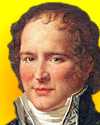 | Compounds formed by chemical attraction, possess new properties different from those of their component parts... chemists have long believed that the contrary took place in their combination. They thought, in fact, that the compounds possessed properties intermediate between those of their component parts; so that two bodies, very coloured, very sapid, or insapid, soluble or insoluble, fusible or infusible, fixed or volatile, assumed in chemical combination, a shade or colour, or taste, solubility or volatility, intermediate between, and in some sort composed of, the same properties which were considered in their principles. This is an illusion or error which modern chemistry is highly interested to overthrow. |
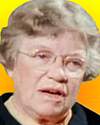 | Never doubt that a small group of thoughtful, committed citizens can change the world; indeed, it is the only thing that ever has. |
 | Almost all the world is natural chemicals, so it really makes you re-think everything. A cup of coffee is filled with chemicals. They've identified a thousand chemicals in a cup of coffee. But we only found 22 that have been tested in animal cancer tests out of this thousand. And of those, 17 are carcinogens. There are ten milligrams of known carcinogens in a cup of coffee and thats more carcinogens than youre likely to get from pesticide residues for a year! |
| Before you look at today's web page, see if you can answer some of these questions about the events that happened on this day. Some of the names are very familiar. Others will likely stump you. Tickle your curiosity with these questions, then check your answers on today's web page. | |
| Births | |
 | Margaret Mead, an American anthropologist, born 16 Dec 1901, was best-known for her studies of primitive societies, especially with regard to various aspects of comparative child psychology, oceanic ethnology, cooperation and competition among primitive peoples, and cross-cultural communications. Where did she study the culture that she profiled in her first book (for which she remains famous)? |
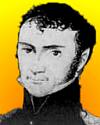 | Johann Wilhelm Ritter, born 16 Dec 1776, was a German physicist who discovered a new region of the electromagnetic spectrum (1801) and thus helped broaden man's view beyond the narrow region of visible light. Which region of the spectrum did he discover? |
| Deaths | |
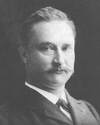 | Eugène Dubois (1858-1940) was a Dutch anatomist and geologist who discovered the remains of the first known fossil of Homo erectus. Dubois was the first person to ever deliberately search for fossils of human ancestors. Can you name this fossil man? |
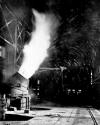 | Percy Carlyle Gilchrist was an English metallurgist who is known for co-developing the Thomas-Gilchrist process. Calcined dolomite is used as a lining to a Bessemer converter, to reduce a certain impurity during the manufacture of steel. The impurity makes steel brittle. Which impurity did Gilchrist work upon removing? |
| Events | |
 | On 16 Dec of a certain year, the first synthetic diamond was produced at General Electric Research Laboratories by Prof. H. T. Hall. In which decade was this synthetic diamond produced? |
 | On 16 Dec 1811, an earthquake struck in America that was the first of a major series. Further earthquakes occurred until 7 Feb 1812 The first two had an epicenter in Arkansas, were felt for hundreds of miles around, and were among the most powerful recorded in the U.S. Earthquakes in the fault area remain a concern By what name (after a Missouri community struck last) is this series of earthquakes known? |
Fast answers for the previous newsletter for December 15: Esperanto • Pierre and Marie Curie • he designed the framework for the Statue of Liberty • Wolfgang Pauli • decade containing the year 1939 • Andromeda.
 If you enjoy this newsletter, the website, or wish to offer encouragement or ideas, please send feedback by using your mail reader Reply button.
If you enjoy this newsletter, the website, or wish to offer encouragement or ideas, please send feedback by using your mail reader Reply button. Your click on a Facebook, StumbleUpon, or other social button on the site webpages is also a welcome sign of appreciation. Thank you for using them.
© This newsletter is copyright 2019 by todayinsci.com. Please respect the Webmaster's wishes and do not put copies online of the Newsletter — or any Today in Science History webpage. (If you already have done so, please remove them. Thank you.) Offline use in education is encouraged such as a printout on a bulletin board, or projected for classroom viewing. Online, descriptive links to our pages are welcomed, as these will provide a reader with the most recent revisions, additions and/or corrections of a webpage. For any other copyright questions, please contact the Webmaster by using your mail reader Reply button.
--
If you do not want to receive any more newsletters, Unsubscribe
To update your preferences and to unsubscribe visit this link
Executive Real Estate Business Class
-
"It was like a man with wings. It wasn't like anything you'd see on TV or in a monster movie." ...
About the publisher
Search This Blog
Blog Archive
-
▼
2020
(1542)
-
▼
December
(121)
- On This Day for December 31 - Ottawa made capital ...
- Newsletter for Thursday 31 December.
- December 31: The Battle of Quebec, a Rainy Day in ...
- All That's Interesting's 10 Most Popular Stories O...
- On This Day for December 30 - Union of Soviet Soci...
- Newsletter for Wednesday 30 December.
- December 30: Creation of the USSR, the All India M...
- Know Better in 2021
- On This Day for December 29 - U.S. annexation of T...
- Newsletter for Tuesday 29 December.
- December 29: On This Day in History
- The Best of HISTORY This Week
- The 10 Best History Uncovered Articles Of 2020
- On This Day for December 28 - Westminster Abbey op...
- Newsletter for Monday 28 December.
- December 28: Galileo Observes Neptune, Harriet Tub...
- The death of Thomas Becket | The history of New Year
- On This Day for December 27 - Dutch transfer of In...
- Newsletter for Sunday 27 December.
- December 27: On This Day in History
- On This Day for December 26 - Indian Ocean tsunami...
- Newsletter for Saturday 26 December.
- December 26: 1st Spanish Settlement in the New Wor...
- The Anti-Santa Who Takes Naughty Kids To Hell, The...
- On This Day for December 25 - Christmas celebrated...
- Newsletter for Friday 25 December.
- December 25: Andrew Johnson's Christmas Pardon, Ce...
- On This Day for December 24 - Treaty of Ghent, Joh...
- Newsletter for Thursday 24 December.
- December 24: The Treaty of Ghent, Author Stephenie...
- Demystified Video: Why Is Christmas in December?
- On This Day for December 23 - Aleksander Kwaśniews...
- December 23: Van Gogh's Madness, the Partition of ...
- On This Day for December 22 - Alfred Dreyfus sente...
- Newsletter for Tuesday 22 December.
- December 22: An Impenetrable Fortress Falls, the 1...
- On This Day for December 21 - Radium discovered by...
- December 21: The Soviet Union Ends, Life in the Tr...
- A history of Christmas – from Oliver Cromwell to V...
- On This Day for December 20 - Macau made an admini...
- Newsletter for Sunday 20 December.
- December 20: US Buys Louisiana, the Viet Cong and ...
- On This Day for December 19 - Articles of impeachm...
- Newsletter for Saturday 19 December.
- December 19: On This Day in History
- The Soviet Executioner Who Killed 7,000 Poles One ...
- On This Day for December 18 - Slavery abolished in...
- Newsletter for Friday 18 December.
- December 18: The Yuan Dynasty Begins, Nuclear Powe...
- The perfect gifts for the curious kids in your lives!
- On This Day for December 17 - Flight of the Wright...
- Newsletter for Thursday 17 December.
- December 17: Tamerlane Sacks Delhi, the Wright Bro...
- Demystified: Do We Really Use Only 10 Percent of O...
- On This Day for December 16 - Boston Tea Party, Ja...
- Newsletter for Wednesday 16 December.
- December 16: A Boston Tea Party, the Battle of the...
- Haunting Kennedy Assassination Photos That Most Pe...
- On This Day for December 15 - Premiere of Gone wit...
- Newsletter for Tuesday 15 December.
- December 15: Vandals, Mongols and the US Bill of R...
- On This Day for December 14 - Roald Amundsen's arr...
- Newsletter for Monday 14 December.
- December 14: Amundsen and Scott's Epic Race to the...
- On This Day for December 13 - New Zealand sighted,...
- Newsletter for Sunday 13 December.
- On This Day for December 12 - U.S. Supreme Court d...
- December 12: A Generous Manhattan Gift, Bush v. Go...
- How eels powered the medieval economy | The histor...
- 55 Of History's Creepiest Pictures And Their Distu...
- On This Day for December 11 - Abdication of King E...
- Newsletter for Friday 11 December.
- December 11: The Mayflower Pilgrims, an Abdication...
- UPDATED: Britannica Year in Review: Story of the Year
- Britannica Year in Review: Story of the Year
- On This Day for December 10 - Encyclopædia Britann...
- Newsletter for Thursday 10 December.
- December 10: Spanish-American War, Edward VIII and...
- Laurence Fishburne Hosts a New HISTORY Digital Series
- Demystified: What's the Difference Between Whiskey...
- On This Day for December 9 - Lech Wałęsa elected p...
- Newsletter for Wednesday 9 December.
- December 9: Belisarius Enters Rome, Lech Wałęsa El...
- What will you discover this Thursday?
- On This Day for December 8 - John Lennon fatally s...
- Newsletter for Tuesday 8 December.
- December 8: Lincoln's Amnesty Proclamation, the US...
- On This Day for December 7 - Pearl Harbor attack, ...
- Newsletter for Monday 7 December.
- December 7: Birth of Plastics, Infamy in Pearl Har...
- History books of the year | Historical board games...
- On This Day for December 6 - Irish Free State esta...
- Newsletter for Sunday 6 December.
- December 6: Mongols Destroy Kiev, Slavery Abolishe...
- On This Day for December 5 - Witchcraft condemned ...
- Newsletter for Saturday 5 December.
- December 5: Gold Rush in California, End of Prohib...
- HNN Newsletter: You are now unsubscribed
- 10 Medieval Execution Methods That Are The Definit...
- On This Day for December 4 - Ivan the Terrible pro...
-
▼
December
(121)
-
Blogroll
-
About
HistoryFact










0 comments:
Post a Comment